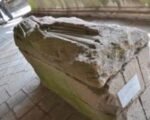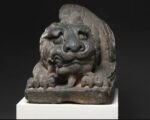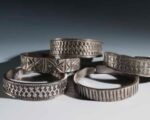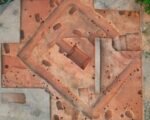In a remarkable archaeological discovery, workers in Glottertal, Germany, unearthed a hoard of over 1,500 medieval coins while laying pipes near a local swimming pool. The coins, dating back to around 1320, were found by Claus Völker, a local resident assisting with the project. This find is considered one of the most significant medieval coin hoards in recent decades, offering a unique glimpse into the economic history of the region. The coins, primarily minted in present-day Germany, Switzerland, and France, are now being studied by experts to uncover more about their origins and historical context.
Discovery and Initial Findings
The discovery of the medieval coin hoard in Glottertal began in May 2024 during routine construction work. Claus Völker, who was assisting with the installation of a water pipeline, noticed a glimmer of silver in the mud. Upon closer inspection, he realized they had stumbled upon a significant find. The State Office for Monument Preservation (LAD) in the Stuttgart Regional Council was promptly notified, and archaeologists were dispatched to the site.
The initial excavation revealed around 1,000 coins, prompting a halt in the construction project to allow for a more thorough investigation. Despite challenging conditions, including heavy rains that turned the site into a muddy quagmire, the team persevered. With the help of licensed metal detectorists, they uncovered an additional 600 coins, bringing the total to approximately 1,600.

The coins were primarily minted in the early 14th century, with most originating from mints in Breisach, Zofingen, and Freiburg. A smaller number of coins came from Basel, St. Gallen, Zurich, Laufenburg, and Colmar. This diverse array of coins highlights the extensive trade networks and currency circulation in the region during that period.
Historical Significance and Analysis
The medieval coin hoard from Glottertal is not only significant due to its size but also because of the insights it provides into the economic practices of the 14th century. The coins were minted around 1320, a time when the region was known for its silver mines and vibrant trade activities. The discovery offers valuable information about the circulation of coins, minting activities, and the silver trade in the Breisgau-Hochschwarzwald district.
Experts from the LAD are now meticulously cleaning and analyzing the coins to determine their exact origins and historical context. The coins’ high silver content and intricate designs reflect the advanced minting techniques of the time. Each coin’s unique markings and inscriptions provide clues about the political and economic landscape of medieval Europe.
The hoard’s discovery also raises intriguing questions about why the coins were buried. They could have been hidden to safeguard against theft or conflict, or perhaps as a means of preserving wealth. At the time they were minted, the coins would have held significant purchasing power, equivalent to the value of about 150 sheep. This substantial value suggests that the hoard belonged to a wealthy individual or institution.
Future Research and Preservation
The discovery of the medieval coin hoard in Glottertal has sparked considerable interest among historians and archaeologists. The LAD plans to conduct further excavations in the area to uncover more artifacts and gain a deeper understanding of the region’s history. The coins will be carefully preserved and studied, with findings published in academic journals and shared with the public through exhibitions and educational programs.
The hoard’s preservation is crucial for future research and public education. By studying the coins, researchers can gain insights into the economic, social, and political dynamics of medieval Europe. The findings will contribute to our understanding of trade networks, currency circulation, and the role of silver in the region’s economy.
Public interest in the discovery is high, and the LAD is working to ensure that the coins are accessible to both scholars and the general public. Plans are underway to display the hoard in local museums, where visitors can learn about the history and significance of the find. Educational programs and workshops will also be organized to engage the community and promote awareness of the region’s rich archaeological heritage.













